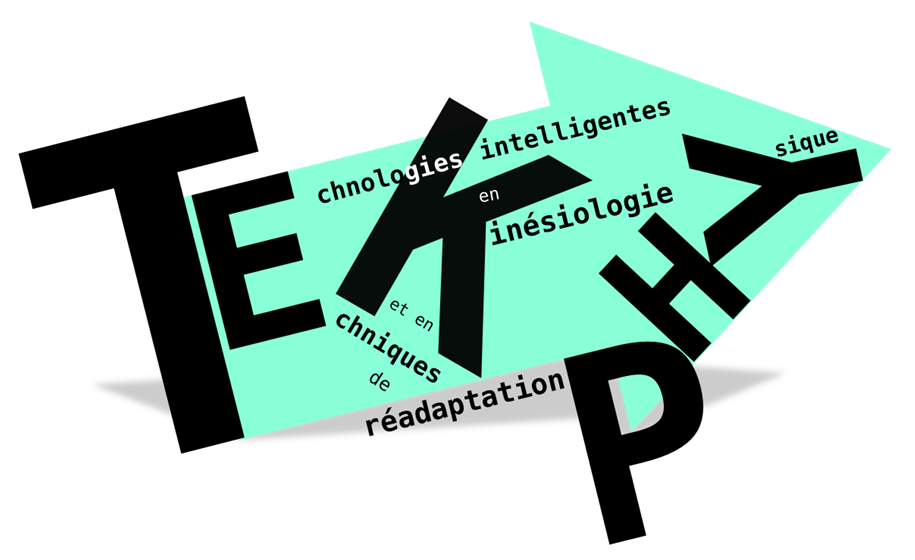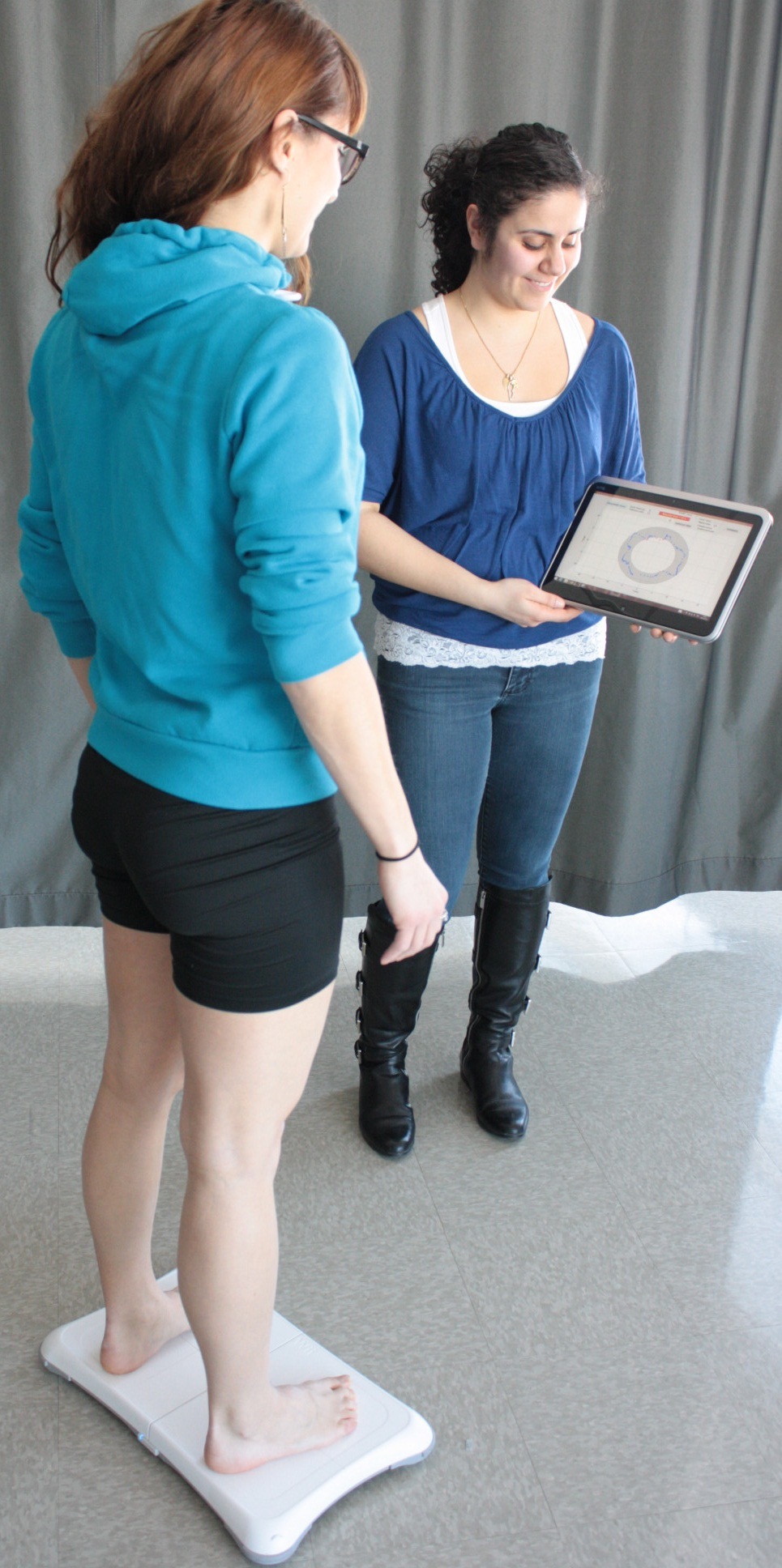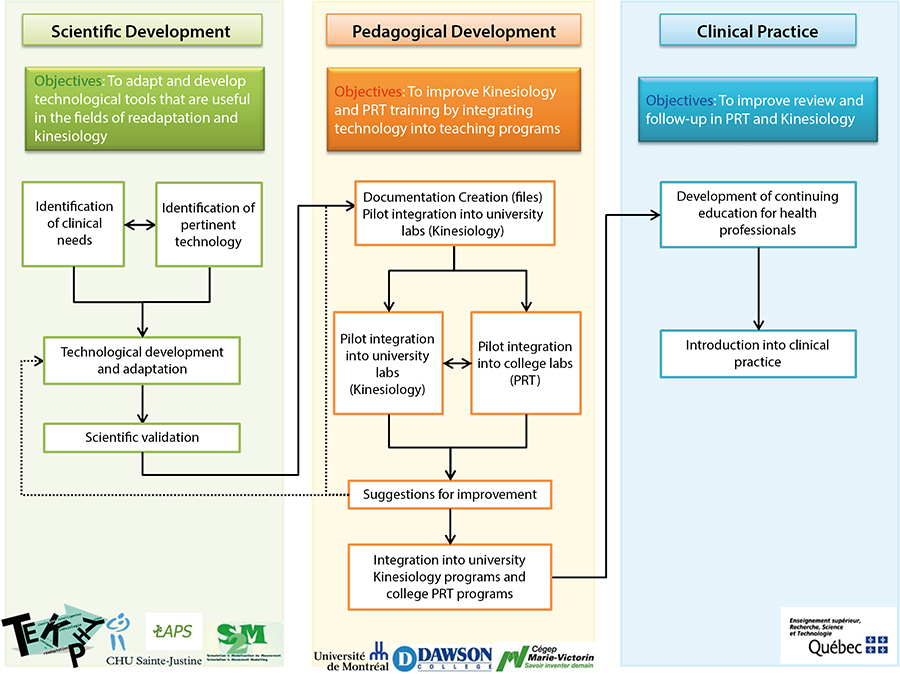The TEKPHY Project: Integrating Technology into Kinesiology and Physical Rehabilitation
In recent years, smart technologies have entered the health sciences. Whether the Nintendo Wii console in physical rehabilitation, a mobile application or postural analysis, technological innovations abound. Future health professionals will increasingly come to know, evaluate and employ smart technology. However, merely knowing that this technology is available is not enough; it is still necessary to choose applications well and use them properly.

TEKPHY Project aims to upgrade the skills and practice of health professionals
To meet this need, professors in the Department of Kinesiology at the Université de Montreal and technical college programs in physical rehabilitation (PRT) at Dawson College and Cégep Marie-Victorin have partnered to develop the TEKPHY Project (technologies intelligentes en kinésiologie et en techniques de réadaptation physique). This project, funded by the PCUC (programme de collaboration universités-collèges) of MESRS, relies on synergies between students, engineers, professors and clinicians to identify, adapt and develop technological tools that can be used by professionals in rehabilitation and kinesiology. Our Facebook page, linked above, broadcasts the achievements and activities of the TEKPHY Team as well as inspiring discoveries about the use of technology within the field of health. In other words, this project aims to upgrade the skills and practice of health professionals by integrating technology into their practical training in order to improve the assessment, supervision and monitoring of clients.
The Project’s Stages
At its start in September 2013, the TEKPHY Project was divided into four main steps. The first was to target the needs of professionals in rehabilitation and kinesiology concerning the assessment of joint mobility, energy expenditure, postural balance and the prescription of details for rehabilitation or training. Meanwhile, work was initiated in order to become familiar with low-cost technologies such as active gaming consoles (Kinect and Wii) and mobile applications with the potential to be integrated into professional practice. For the second stage, technologies are being integrated into some labs where students are required to assess the validity and relevance of integrating these tools into their practice. Student feedback is the backbone of the third phase of the project which aims to adapt and develop specific tools to the requirements established by students in PRT and Kinesiology. Ultimately, these technologies are integrated into the practice of physical rehabilitation therapists and kinesiologists, first in school clinics and then in professional practice.
A Teaching Example
The notion of postural balance is common to both areas of study involved in TEKPHY. It can be assessed and improved using the Wii Balance Board platform (WBB). This Wii accessory console is a strong platform and is already widely used in several countries in an alternative rehabilitation context due to its accessibility and its user-friendly interface that promotes motivation and therefore use in a rehabilitation program. The WBB can control several video games by changes in loading measured by the platform. However, as this tool only allows play without recording measurements, a graphical interface has been developed to replicate some features while adding the ability to arrange the games based on prescribed pathologies. Thus, the technology initially developed in a playful context is used as a tool for measurement and training. In addition, for the purpose of facilitating integration into education, all tools are accompanied by scientific, technical and practical data.

Figure 2: The Wii Balance Board (WBB) platform and the graphic interface developed to complement it in order to create a training tool for postural balance
In Conclusion
Upon completion of this project the TEKPHY team will have been able to generate collaboration between teachers, physiotherapists, kinesiologists and students in its target disciplines to identify and develop intelligent low-cost technologies that meet clinical needs. It is predicted that such an approach centered on student participation in the development of their future profession, will modernize practices. Certainly, the students involved develop critical thinking skills towards ubiquitous technologies in their daily lives, as well as the comfort and curiosity to experiment with innovation in their future passion.


